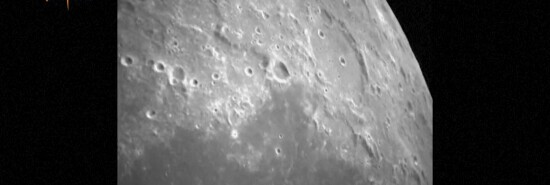
Space is the next frontier for India-US collaboration
Ambassador Taranjit Singh Sandhu
Few moments in history unite all mankind.
Neil Armstrong’s famous words from 1969 — “One small step for man, one giant leap for mankind” — have inspired generations to look up at the night sky and believe in the impossible. On August 23, India’s Chandrayaan-3 spacecraft landed on the Moon’s south pole and defined a new paradigm in audacious exploration. India may have become the first country to achieve this feat, but the triumph belongs to all of humanity.
ROMNEY ACKNOWLEDGES PITCHING MANCHIN ON STARTING THIRD PARTY AHEAD OF 2024
India’s space program started in 1962, a mere 15 years after the country’s independence. Early investments into such technological projects clearly demonstrated the nation’s will to put behind the ravages of a colonial past. Led by the Indian Space Research Organization (ISRO), India launched its first satellite in 1975, and has since then developed satellite navigation systems, cryogenic engines, lunar and Mars orbiters, a space observatory, and launch vehicles, which have made the country a preferred destination for global satellite launches.
Since 2015, India has successfully launched more than 350 satellites from 37 countries. Within days of Chandrayaan-3’s success, India launched its first solar research observer, the Aditya-L1. Three aspects of India’s space program assume special importance.
First, the program’s low costs, especially in a world of finite resources and competing priorities. Consider that the Mangalyaan, ISRO’s 2014 Mars Orbiter Mission, cost US$ 74 million – much less than the budgets of the movies Interstellar (US$160 million), The Martian (US$ 108 million), and Gravity ($100 million).
Second, India’s space initiatives supplement its key developmental objectives. These include applications in diverse areas ranging from weather predictions, agriculture yield forecasting, fisheries and aquaculture, tele-education, and telemedicine. Most importantly, India’s space program involves all of our society. Numerous women scientists and engineers at ISRO contributed to the success of Chandrayaan-3, and the images of a room full of women scientists during the craft’s landing will hopefully inspire young girls across the globe to pursue their dreams.
As two nations that greatly value the spirit of scientific inquiry, India and the United States have been working closely on space exploration for decades.
One of the first sounding rocket launches by India was the U.S. Nike Apache in 1963. Today, the two countries are working together towards the launch of the NASA-ISRO Synthetic Aperture Radar (NISAR) satellite, which will help in disaster management and resource monitoring. NASA’s ground stations located around the world are supporting Chandrayaan-3’s tracking, deep space communication, and navigation. Space has also been identified as a key area under the India-U.S. Initiative on Critical and Emerging Technologies (iCET), launched in January 2023.
There is immense scope to further expand our bilateral ties in space.
Following the Summit between Prime Minister Modi and President Joe Biden in June 2023, ISRO and NASA have committed to explore human spaceflight cooperation and launch a joint effort to the International Space Station in 2024.
Data being sent back by Chandrayaan-3 will help aid our understanding of the Moon’s south pole, where it is envisioned the next astronauts to the Moon might land, including under the Artemis program that India joined recently. The commercial space sector presents another area brimming with potential, with the number of space startups in India seeing a rapid increase, from just four in the year 2020 to over 150 today.
The Indian Space Policy of 2023 has opened up avenues for industry, investment, and research collaborations between Indian and U.S. private sector partners.
Both India and the U.S. can combine their strengths to provide space-related applications and services to third countries across the globe. In fact, India already provides services like forest fire detection, solar energy calculation, meteorological data, and disaster management support to countries in the region, while NASA, via its Earth Observation (EO) data and other initiatives, has been a pioneer in aiding the progress towards SDGs in several parts of the world. Together, we can achieve a lot more.
After the success of Chandrayaan-3, Prime Minister Modi said that India’s successful moon mission was not India’s alone but that of all of humanity. This inclusive spirit is one that also drives the India-U.S. relationship, which the leaders of the two countries have described as a “partnership for global good.”
From semiconductors to defense, from green energy to critical and emerging technologies, our cooperation touches every conceivable human endeavor. It is only natural that we further deepen our existing space collaboration and continue working closely in exploring this final frontier.
Indeed, when India and the U.S. come together, the sky is not the limit!
CLICK HERE TO READ MORE FROM THE WASHINGTON EXAMINER
Taranjit Singh Sandhu serves as Ambassador of India to the United States
